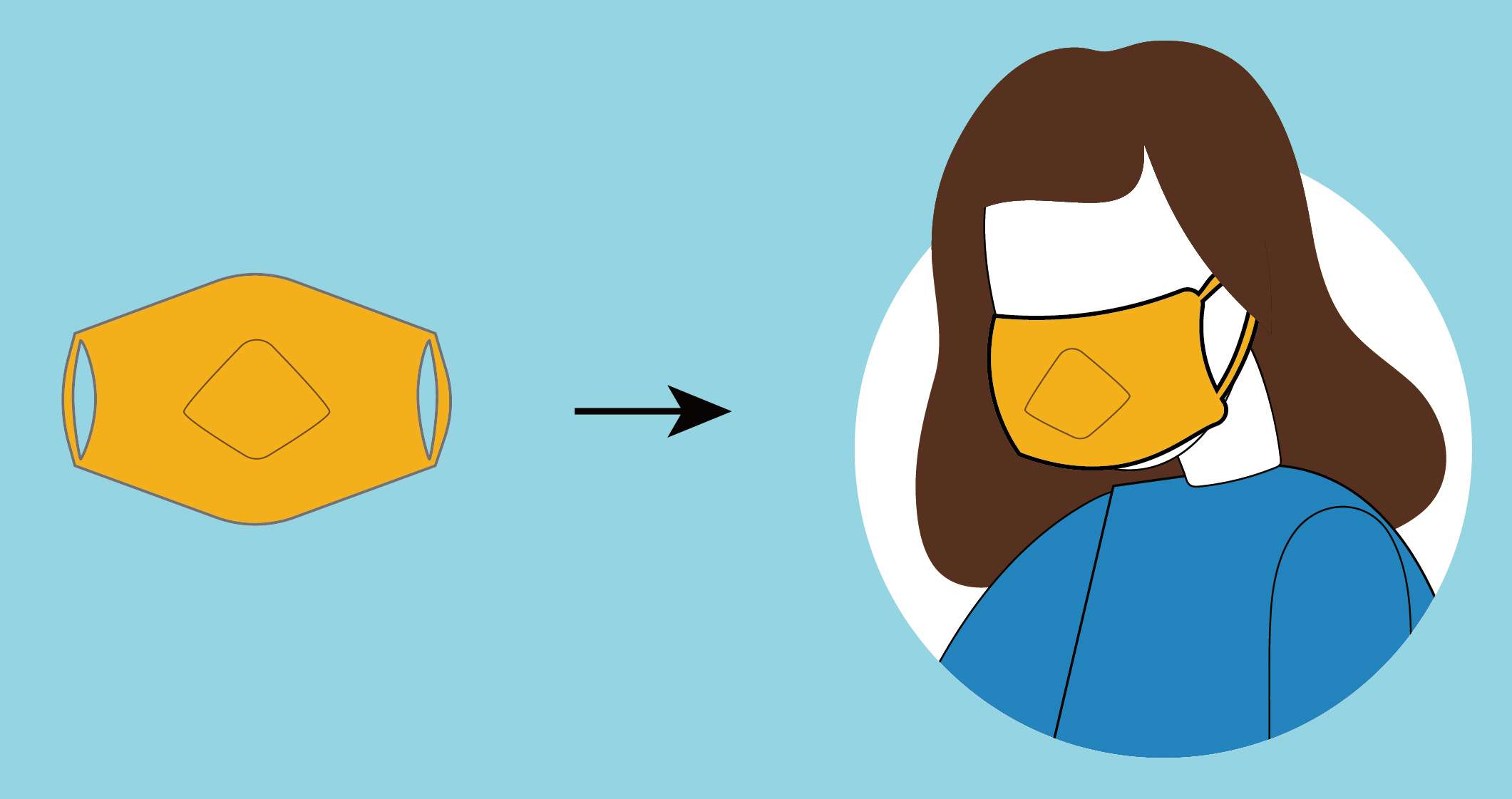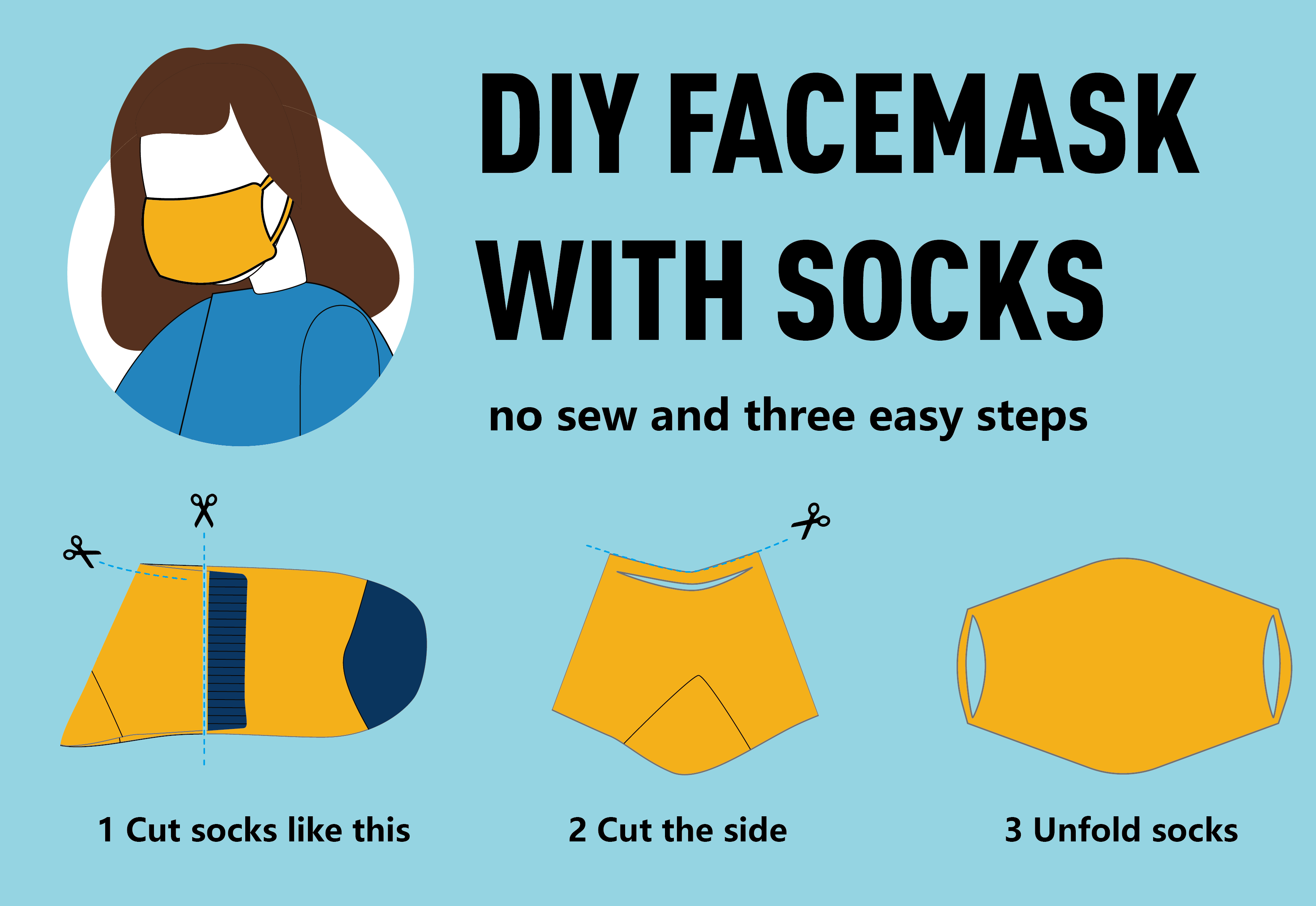“No shirt, no shoes, no service” has been a phrase we have all heard or read at some point, but with the outbreak of COVID-19, that phrase is starting to turn into “no shirt, no shoes, no face mask, no service.” Face masks are an important piece of personal protection equipment; the CDC has recommended that everyone uses a face mask when they are in public areas to reduce the spread of Coronavirus. You don’t have to leave your house to make your own cloth face mask though. With just a few simple items you have around your house, you’ll be able to create your own protective face mask.
In order to create your no-sew face mask, you will need 1 clean sock and a pair of sharp scissors. Your sock can be any pattern you’d like, so feel free to add a personal touch by choosing a fun colored or patterned sock. You’ll want to pick a sock that is average thickness: too thick and it will be too difficult to breathe, too thin and it won’t be functioning as a face mask. We found that using an ankle-length sock works best, however, if you’d like to use a longer sock, simply trim the top of the sock off to create an ankle sock.
First, lay your selected sock out on a table or other flat surface. Then, fold over the part of the sock your foot would enter from down towards the toes of the sock. You’ll want a fold that is a little over half of the size you’d like your face mask. Use the scissors to cut off the excess sock not in the fold. It is better to be generous with your cuts; it’s easy to trim the face mask down if it is too big, but much more difficult to add on fabric if you cut too small.

Next, unfold the sock and open it up. Cut a straight line down the sock from the ankle toward where the toes were. This is a good time to pause and stretch the sock out a bit. The heel of the sock looks a little funny at this point, but don’t worry, by the time we are finished it will look how it is meant to. Gauge the size of the sock to your face. You’ll still want it to be a bit larger than you need, but if it is too big, fold the sock back together and trim a strip off of it to shorten it.

Kiedy już dopasujesz rozmiar do swoich potrzeb, złóż skarpetę z powrotem do siebie od miejsca, w którym wykonaliśmy ostatnie cięcie. następnie wyrównaj koniec palców i koniec kostki, aby złożyć ją na pół (powinno to być to samo zagięcie, od którego zaczęliśmy, kiedy odcinaliśmy część palcową skarpety). Wzdłuż górnej części zagięcia, wytnij 1/4 calowy pasek na 3/4 długości skarpety. W ten sposób powstaną paski dookoła uszu, więc bardzo ważne jest, aby wyciąć je o odpowiedniej grubości, aby mogły się rozciągnąć.

And that’s it – unfold your sock and you’ve got a face mask! To put the face mask on, stretch the thin straps created in the last step around your ears. The heel of the sock now becomes a space for your nose (I told you it would end up looking okay!).

The Mayo Clinic recommends washing your cloth face mask after every day of using it. To wash your face mask, you can simply put it through the washing machine (The CDC recommends using the warmest water possible), or if you’d rather wash it by hand, you can mix 1/3 cup of household bleach with room temperature water, soak the face mask in the mixture for 5 minutes, and rinse clean with cool water (note that bleach may discolor the face mask). To dry the face mask, you can put it through the dryer on the warmest setting, or you can air dry it, preferably in sunlight. Make sure your mask is 100% dry before wearing it again.
Skarpety facemask nie zastępują prawdziwej maski, mogą być używane tylko jako zapasowe lub awaryjne, nadal zalecamy przygotowanie maski medycznej. Mamy nadzieję, że będziesz cieszyć się swoją maską na twarz! Bądźcie bezpieczni!
